Countess Dracula
Loosely based on the legend of the Hungarian Countess Elizabeth Bathory, the 'Queen' of British horror films, Ingrid Pitt plays the title role of the aging Countess who orders her daughter Ilona to be kidnapped while she restores her own youth with virgins' blood and assumes Ilona's identity in order to increase her share of her late husband's estate. Having convinced just about everyone that she is a young, innocent women, Countess Nodosheen (as she is called in the film) is free to plunder the estate of all of the untouched young maidens, so much so that she is even able to fill a bathtub full of blood!
The Hammer studios took full advantage of the relaxation of censorship regulations in the late 1960s and were able to include more sex, nudity and violence in their films made in the late '60s and early '70s, such as The Vampire Lovers and Countess Dracula. Ingrid Pitt epitomised this change of attitudes in British cinema; she was not a bashful lady and was quite obliging when the screenplay called for her to be in a state of undress and committing wanton acts of violence, both of which are present here.
Countess Dracula is an odd release from Hammer, as it is more of an historical drama with some horror elements than a full-blown horror film and does not feature any mention of the Dracula legend until the final reel, when one onlooker shouts "Countess Dracula!" at Pitt. This is hardly a surprise as the title was decided on long before shooting began and director Peter Sasdy refused to change it.
The film itself is an enjoyable piece of the early 1970s Dracula themed output from Hammer Studios and fits in well with the likes of The Vampire Lovers, Daughters of Darkness and Twins of Evil. Although this is a hard film to take seriously, it is still a fascinating watch with a terrific performance by Ingrid Pitt and assured direction based Peter Sasdy.
The Picture
As with the other releases from the Hammer and Amicus studios, the picture quality has not noticeably been improved for the DVD and the picture is soft and occasionally blurry. It is really part of the course for a film like this from this era and I wouldn't really expect it to look any different. The sets are opulent enough, as are the costumes, although some of the period detail leaves a lot to be desired!
When it comes to colours and skin tones, the film gives you ample opportunity to analyse both, such is the nature of the set decoration, costumes and scenes of nudity. These all come across extremely well and at role as quite happy that the transfer.
The Sound
The Dolby 2.0 Stereo English soundtrack is very clear and perfectly suited for the dialogue-dominated soundtrack. Where the actors' voices (including Ingrid Pitt) have been dubbed, there is a noticeable problem with synchronisation, which changes in severity throughout the film.
It is quite nicely scored and the music helps to emphasise the more erotic and horrific elements in the film.
Extra Features
There are a decent amount of extras, not all related to the film and of variable quality, but all worth watching.
The audio commentary with Ingrid Pitt and horror experts Kim Newman and Stephen Jones seems to be dominated by the larger than life Pitt who, through her thick Polish accent, answers the critics' questions and even interrupts them to say such things as how much she likes to be naked on character out that only director Peter Sasdy and how she set about altering her own costumes, much to the chagrin of Equity. She controls the commentary to such an extent that it might have been better to have separate commentaries: one with her and a mediator, and another just with Newman and Jones. The funniest aspect of the commentary is where Pitt, as Arnold Schwarzenegger does on the commentary for Total Recall, refers to her character in the first person and there is plenty of 'this is where I...' or 'this is where my daughter...'.
The 1999 news clip celebration of 50 years of Hammer shown on Meridian TV is only two minutes long and doesn't really shed much light on Ingrid Pitt, Hammer or Countess Dracula.
The 'Tonight' interview with Ingrid Pitt, also from 1999 is six and a half minutes long and is an interesting, though brief, interview with the horror star.
The highlight of the extra features is the 'Where The Action Is' episode of the TV show 'Thriller' from 1975 featuring Ingrid Pitt, Edd Byrne and James Berwick. Aside from Ingrid Pitt, this has no relation at all to Countess Dracula, but is an entertaining and well-written episode of a TV show that I had previously never come across.
There is also an episode of the 1970 TV series 'Conceptions Of Murder' entitled 'Peter And Maria', basically a televised play in which Nigel Green and Yootha Joyce sit around and discuss mass murder. This is another slice of little-known 1970's TV which is unrelated to the film but is given a welcome outing on DVD.
The extra features section concludes with the theatrical trailer for the film, which is actually longer than the Meridian TV celebration of 50 years of Hammer!
Final Thoughts
Unlike the more well-known Hammer films of the 1950s and 60s, such as The Curse of Frankenstein (1957), Dracula (1958) and The Mummy (1959) which starred Peter Cushing and Christopher Lee, this is more of an exploitation film and would never be referred to as a 'horror classic', dwelling on the nudity and bloodletting aspect rather than deep characterisation or a strong narrative. Despite this, Countess Dracula is an interesting addition to the Hammer catalogue with one of Ingrid Pitt's most memorable performances and the extras package make it a DVD worth serious consideration for fans of the genre.
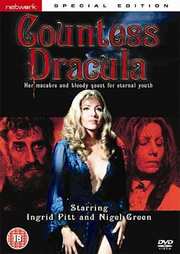
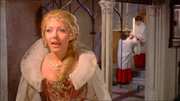
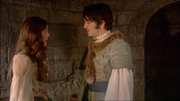
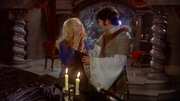
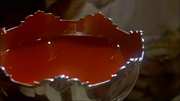
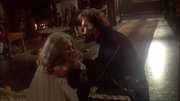
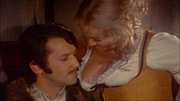

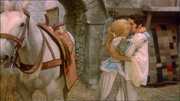
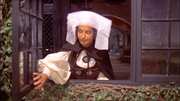
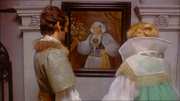
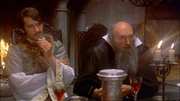

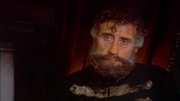
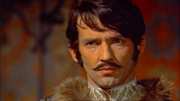
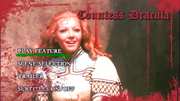
































Your Opinions and Comments
Be the first to post a comment!